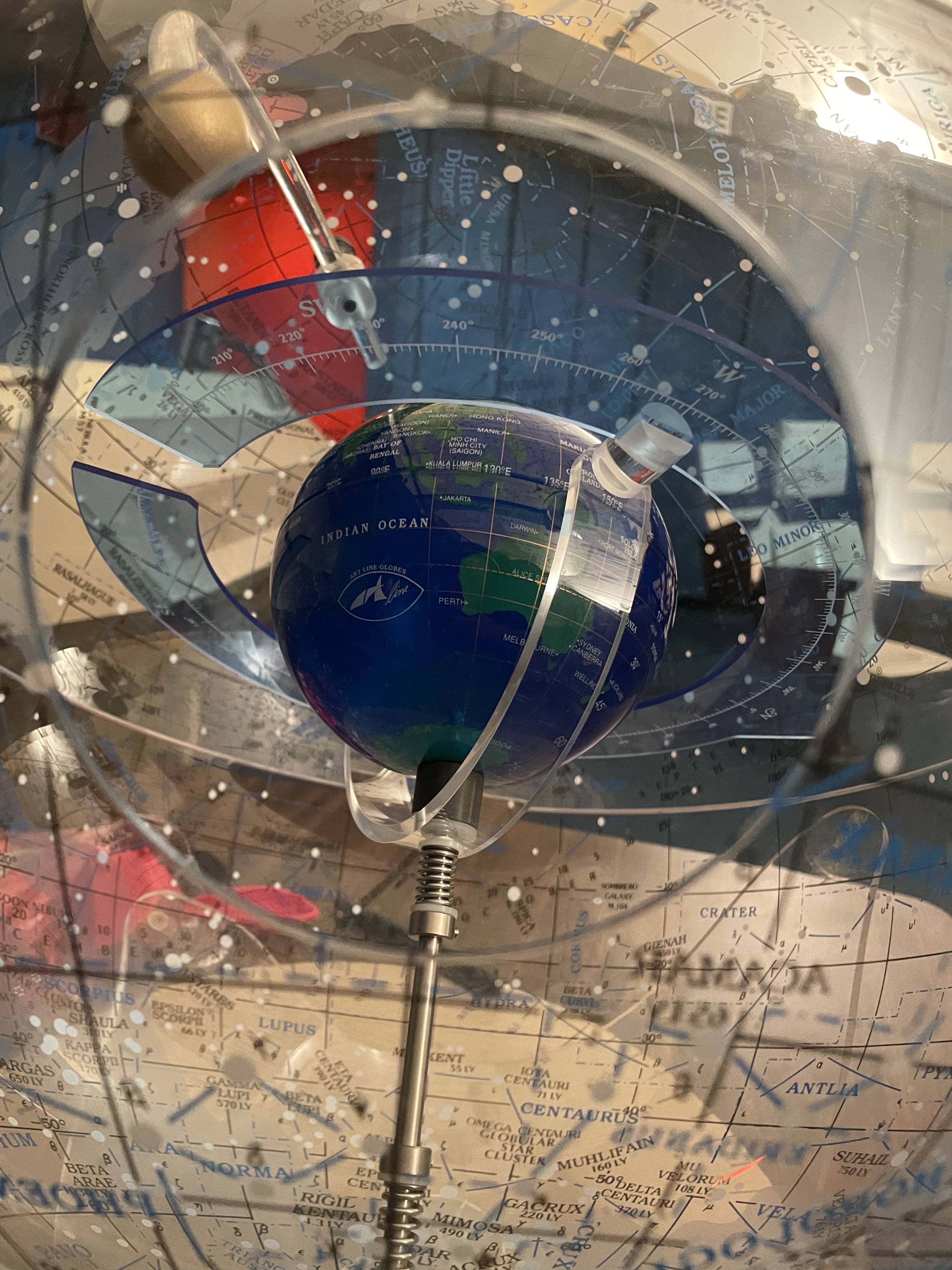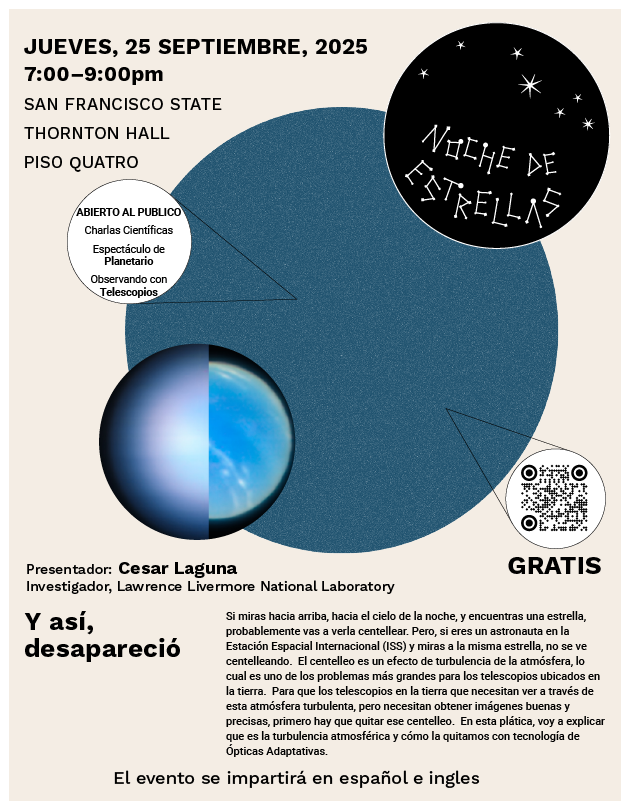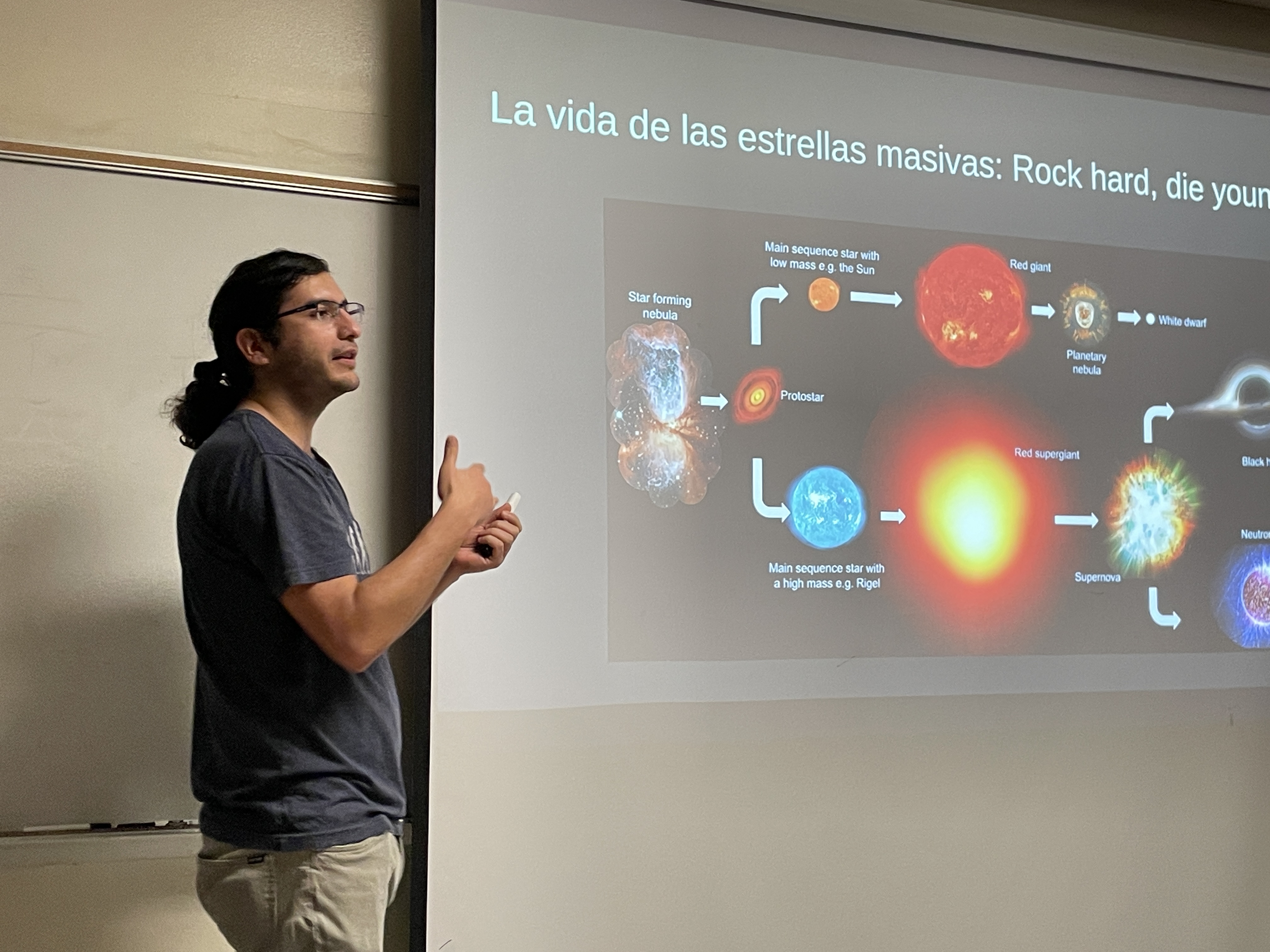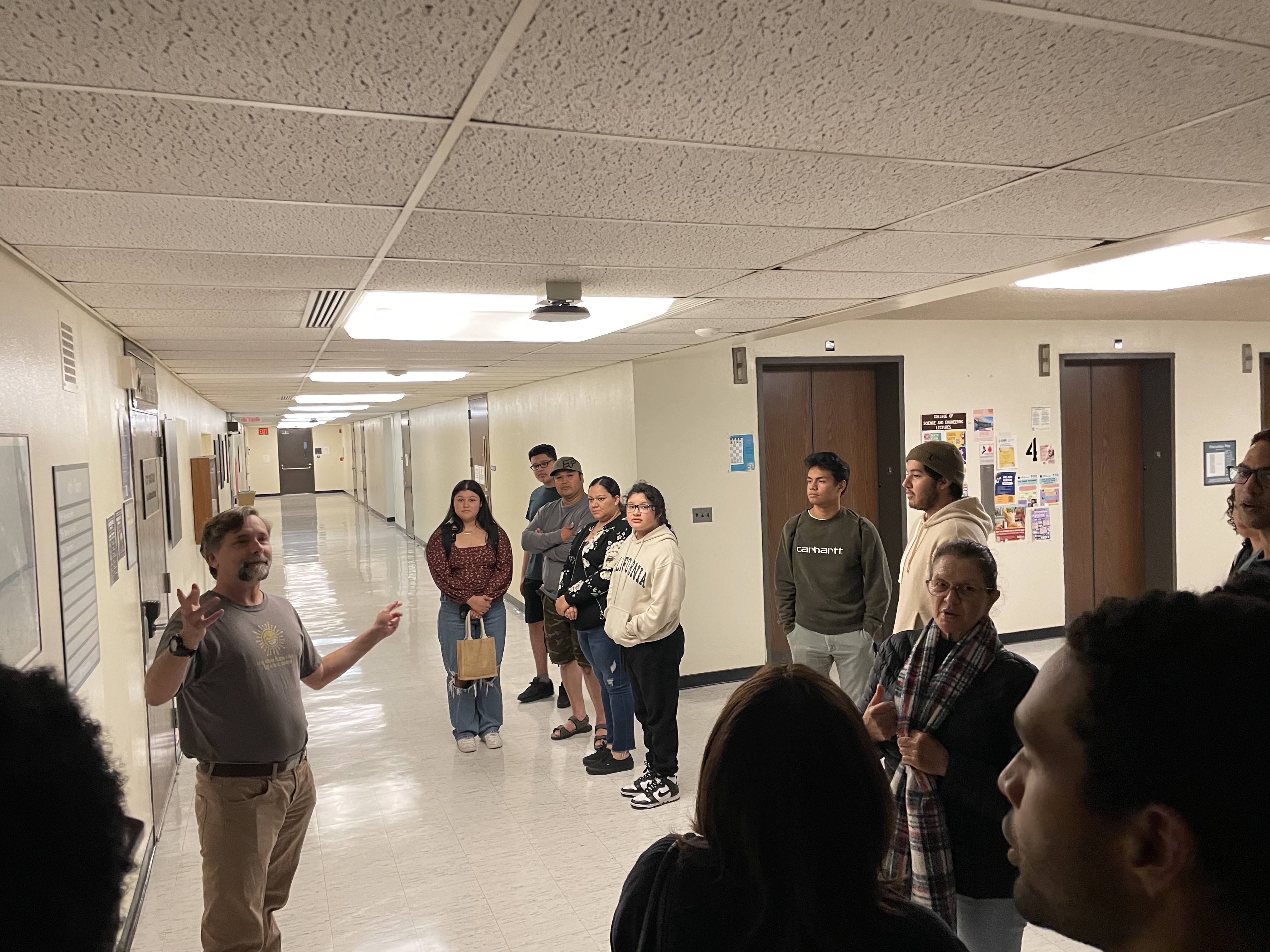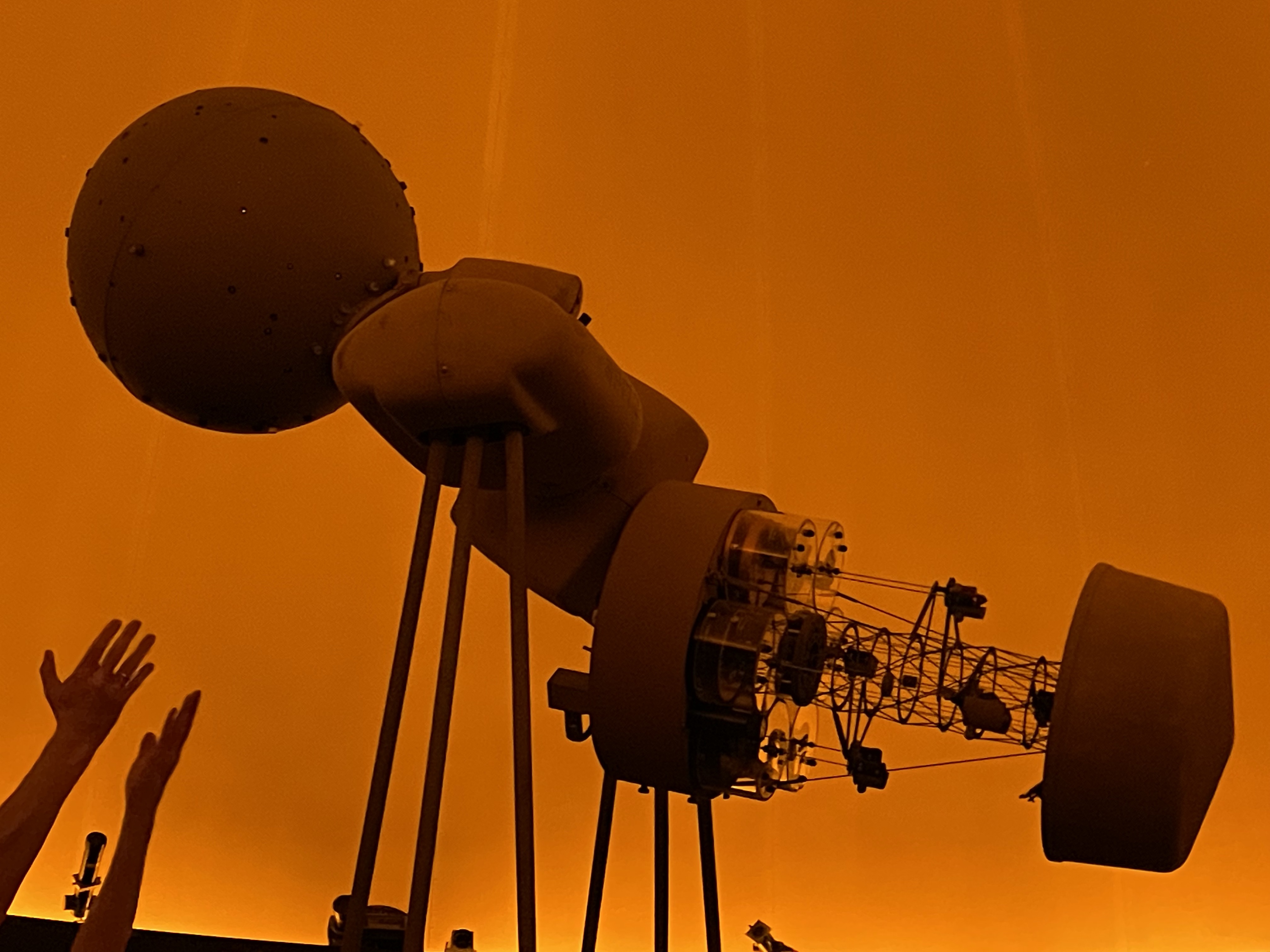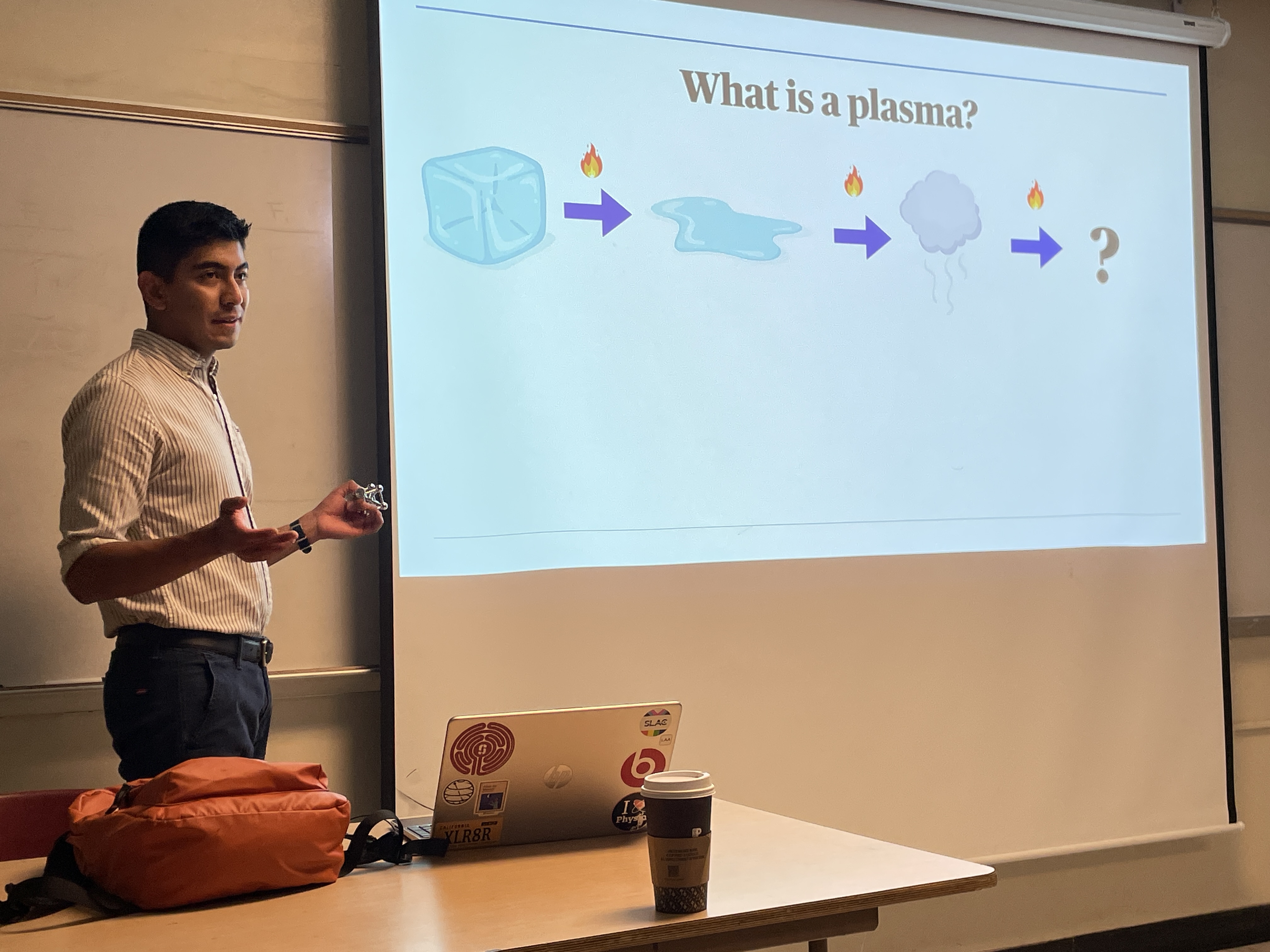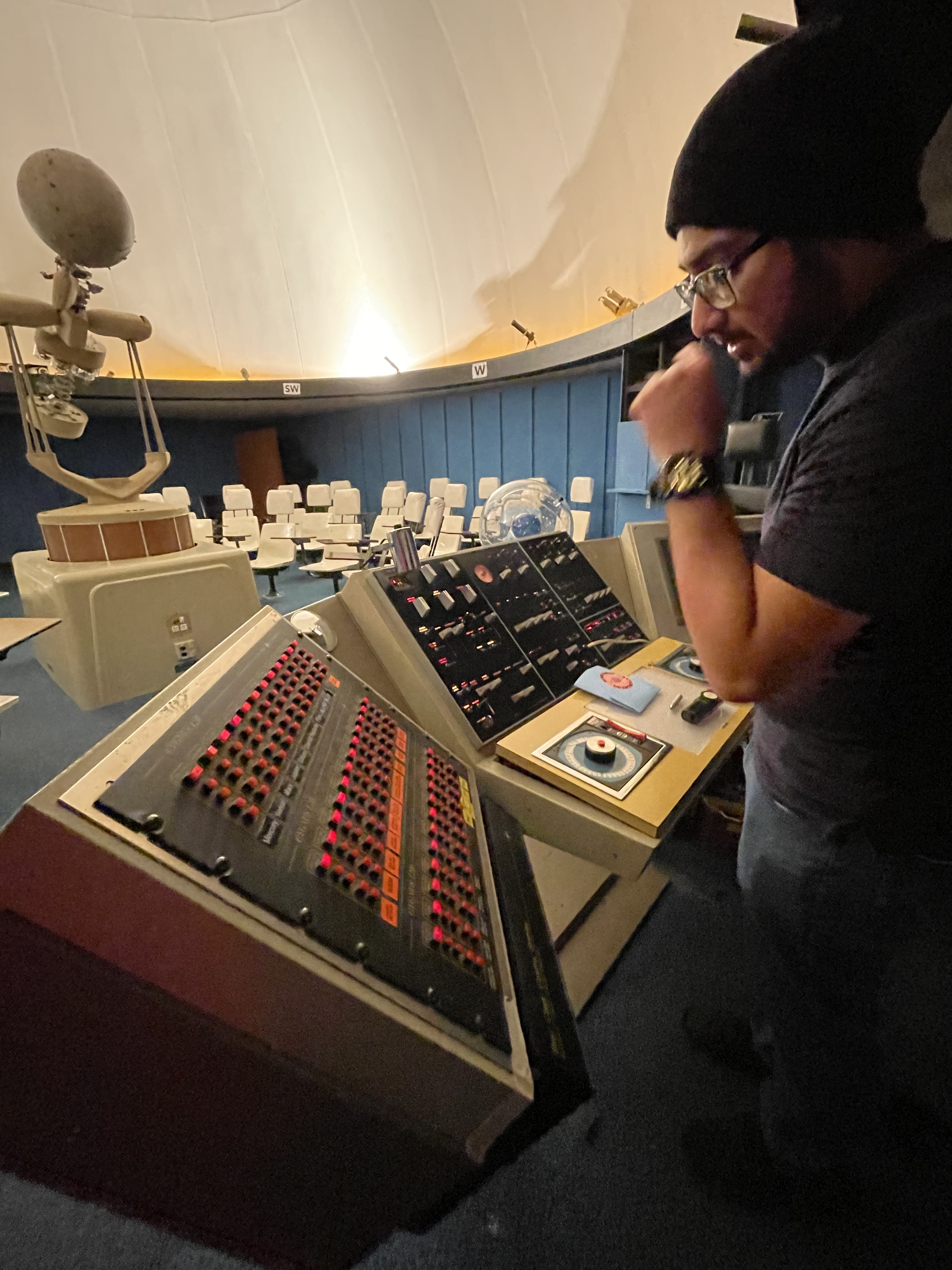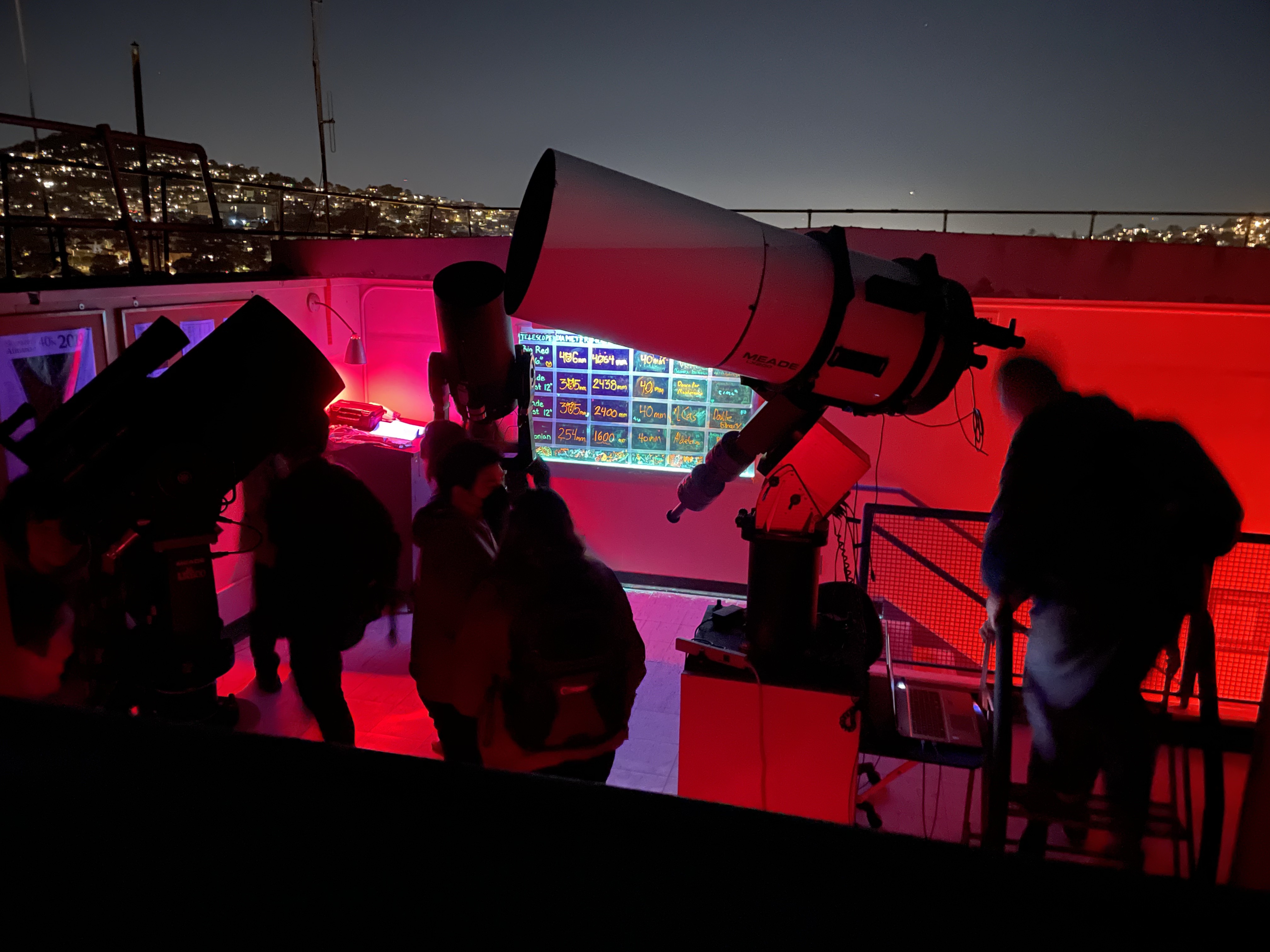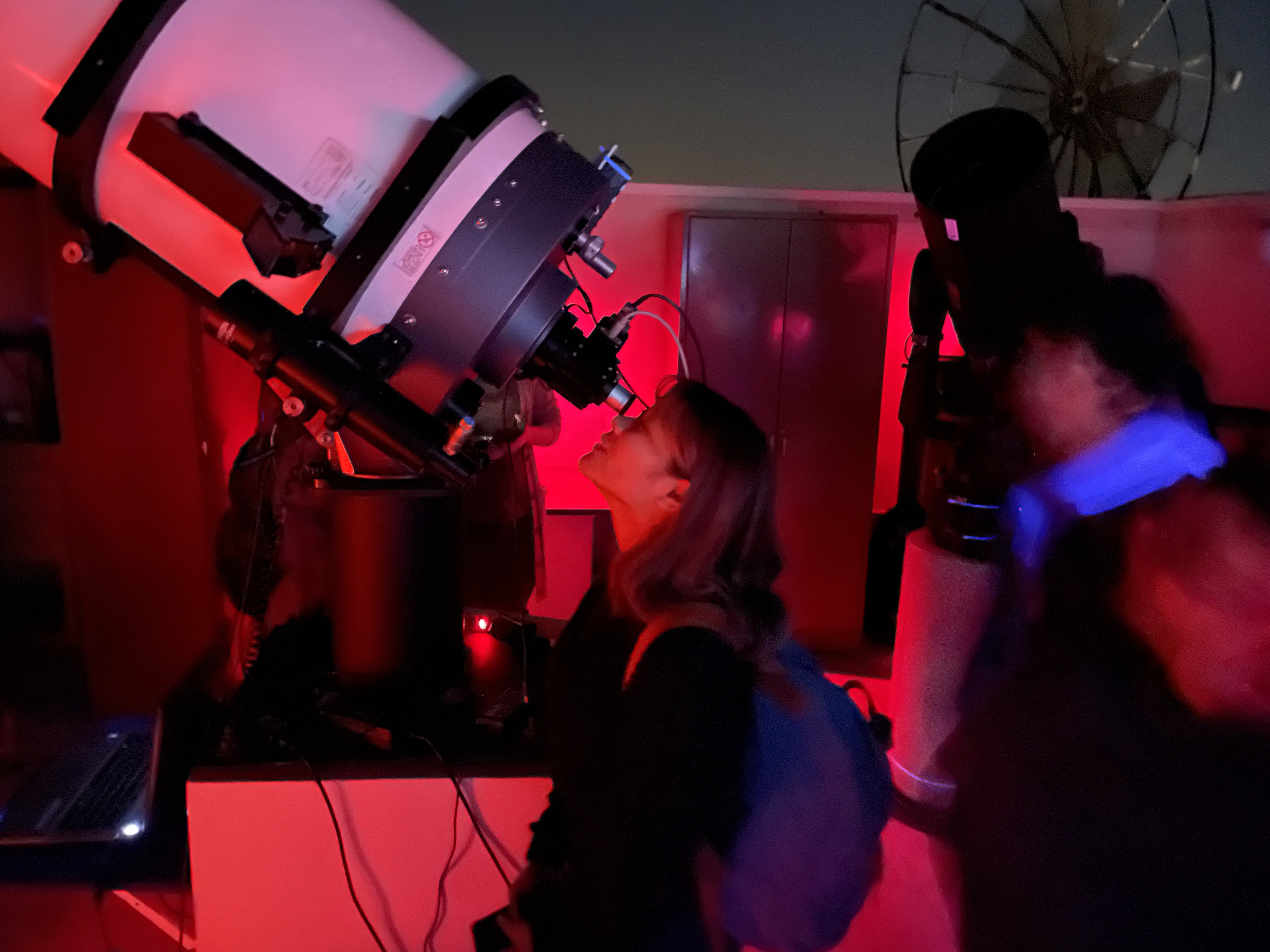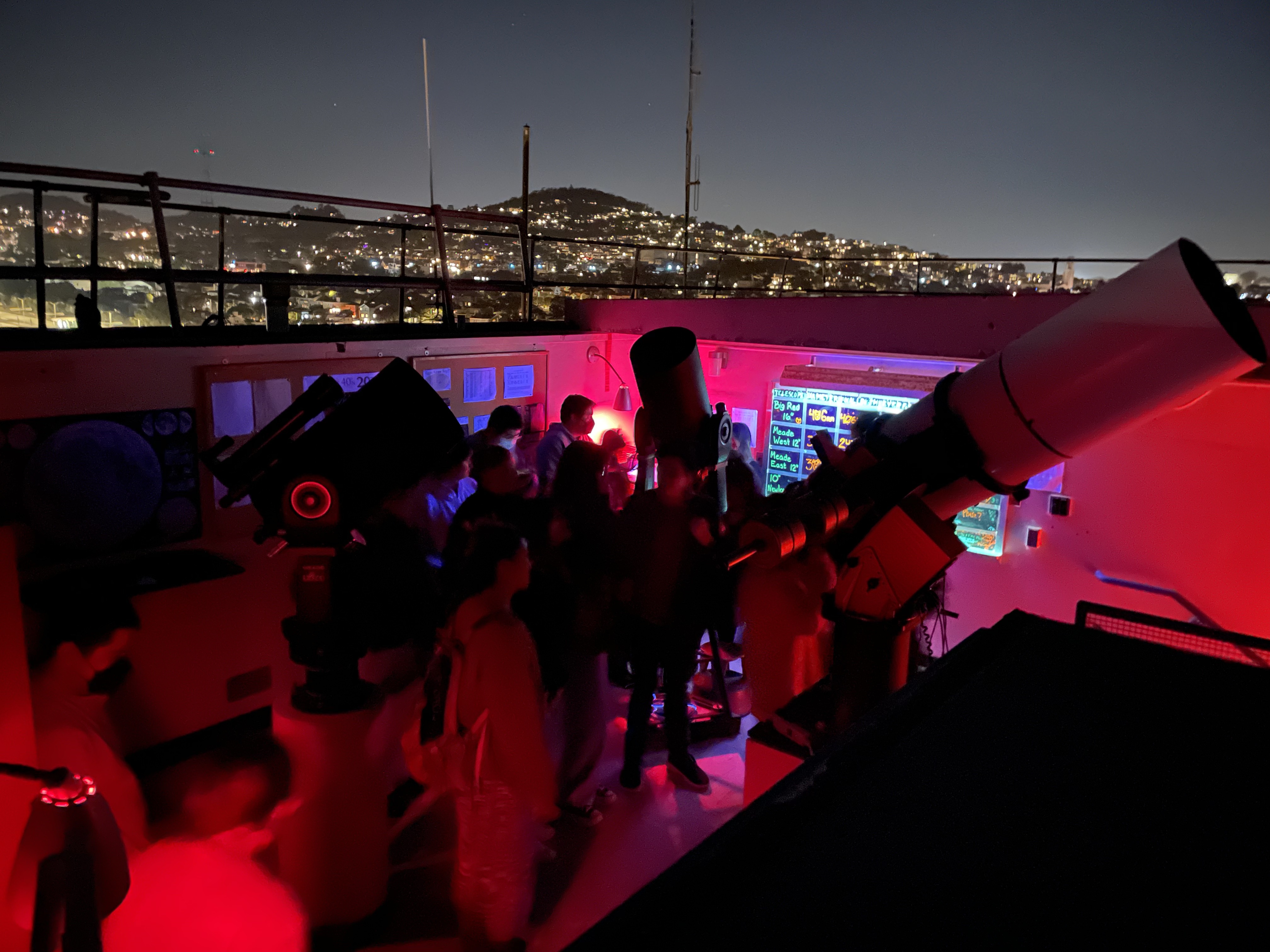¡Te invitamos a disfrutar de las estrellas, gratis!
Estudiar en la universidad es difícil, especialmente cuando estudias algo que ninguno
de tus amigos o familia entiende. Los eventos públicos que organizamos son excelentes
para que las personas cercanas a ti conozcan más sobre lo que estudias.
Noche de estrellas es un evento bilingüe (español e inglés), que incluye charlas científicas,
un espectáculo en el planetario y una noche de observación a las estrellas, usando una variedad
de telescopios ubicados en nuestro observatorio. Acompáñanos!
Have fun with the stars, free!
College is hard, especially when you are studying something that your friends and family
don't understand. Public outreach events are a great way to get the people close to you
excited about what you are studying.
Noche de Estrellas is a bilingual event (Spanish & English) that combines science talks,
planetarium shows, and roof-top telescope viewing. They are on the third Thursday of
each month during the SFSU school year. You don't have to be an astronomer, or even
know one. Come out and enjoy the night!
